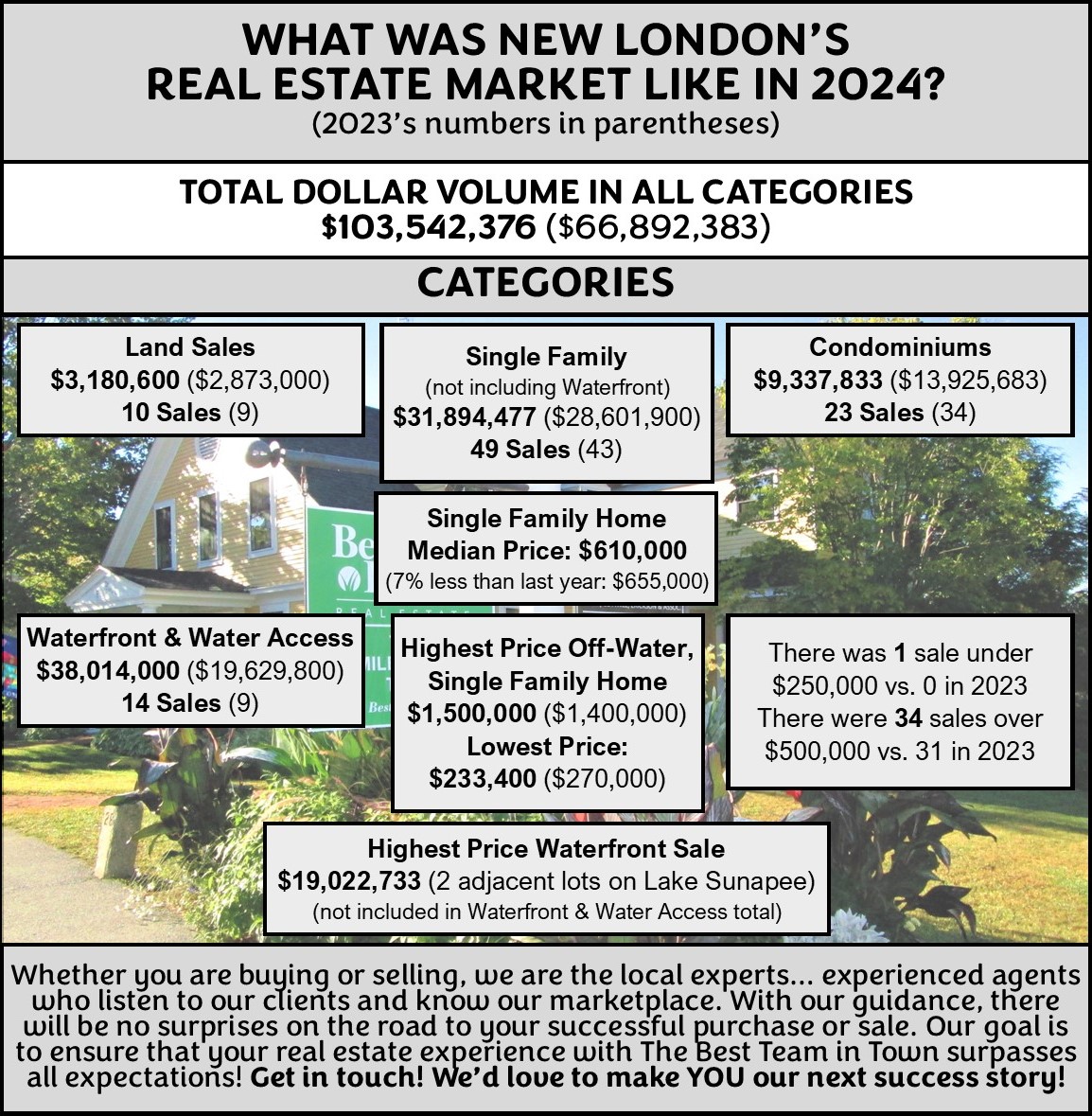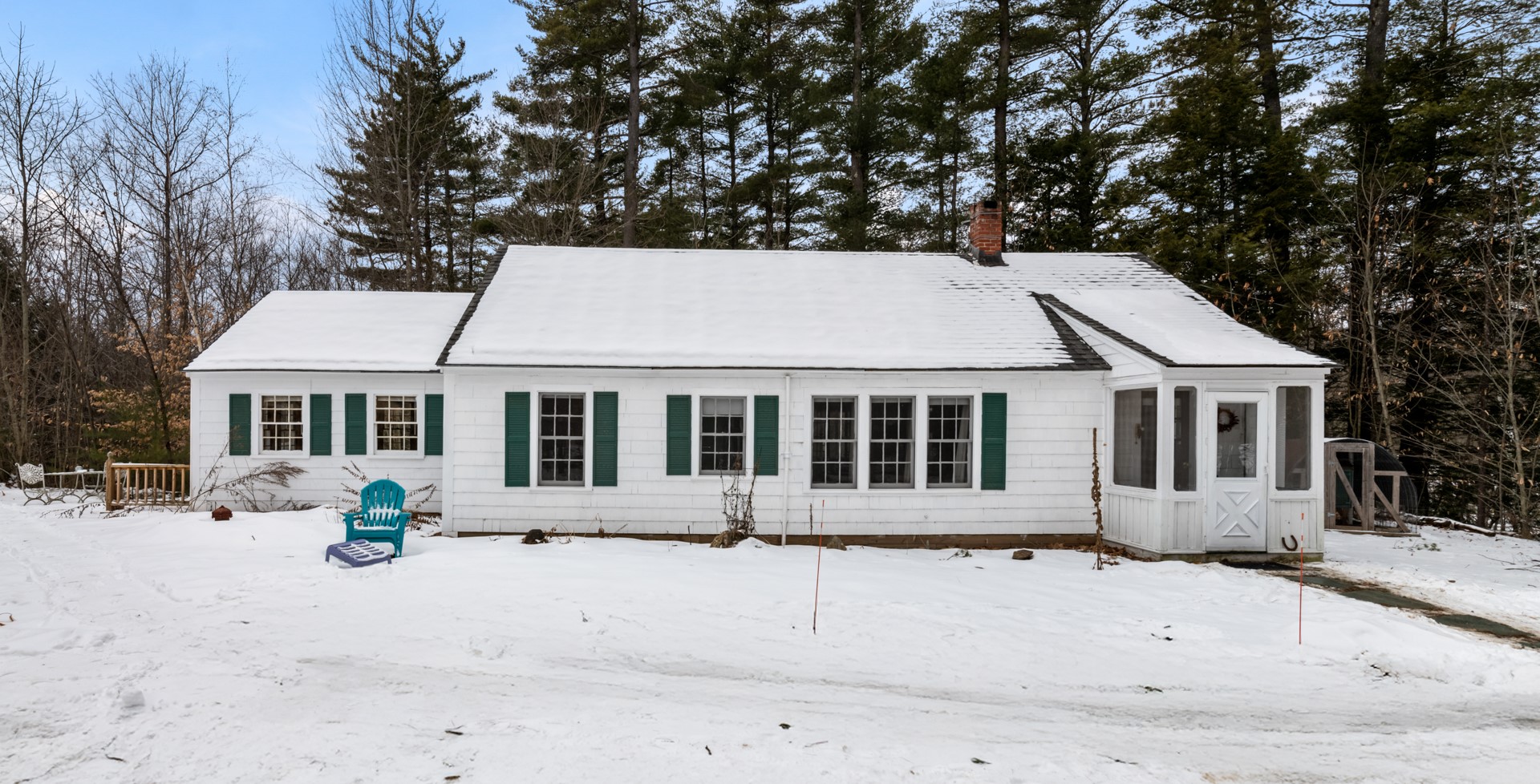
If you’re thinking about selling this spring, now is the perfect time to start getting ready. Below are some key steps to take.
- Declutter: Remove excess décor, unnecessary belongings, oversized furniture. Minimize what you keep on kitchen and bathroom countertops.
- Depersonalize: Buyers need to visualize themselves living there. Remove family photos, religious items, unique collectibles, lawn ornaments, etc.
- Clean thoroughly: Deep clean the entire house, including floors, windows, appliances, and bathrooms.
- Paint if needed: Neutral colors are the gold standard when it comes to selling.
- Repairs & Maintenance: Address any needed repairs or deferred maintenance. Service the furnace, get chimney cleaned, service the generator, etc.
Contact me if you would like help prioritizing what you need to be doing now so you spend time and money on projects that will pay off when you sell.
 |
Donna ForestM: 603-731-5151donna@donnaforest.com Follow her on Facebook |
The post "Essential Home Maintenance Tips for End of Winter Storms" appeared first on Better Homes and Gardens Real Estate Life.
If you haven’t performed your annual home maintenance checks this winter, don’t think you can avoid them because the season’s almost over. End-of-winter storms are wreaking havoc on homes across the country, and homeowners who don’t maintain their properties to combat storms will likely incur costly repairs and possible health risks. Heavy wind, rain, ice, and snow can threaten your home’s structural integrity and damage critical systems. Frigid winter temperatures usually force homeowners to rely on indoor heating systems that may fail if not taken care of properly. Don’t be caught off guard because the weather is fine now. Attend to crucial yearly maintenance as soon as possible to save money, stay safe, and keep peace of mind. Here are some essential home maintenance tips you can review and take action on to avoid the surprise of damaged property, unsafe conditions, and costly repair bills.
Inspect Carbon Monoxide and Smoke Detectors
Chilly weather often prompts homeowners to fire up the furnace or gather around the fireplace. For those who don’t have properly functioning carbon monoxide and smoke detectors, however, warm days and nights indoors might turn into family health risks. Make sure you test your detectors and change the batteries at least once this season, and keep in mind that carbon monoxide detectors typically last for three to five years, while smoke detectors last for eight to ten years.
Protect Pipes
Don’t neglect your plumbing if you live where water freezes. Protect your pipes from freezing and bursting by taking preventative measures like installing frost-proof spigots or closing interior shut-off valves leading to outdoor faucets. Wrap pipes in unheated areas, such as in basements and attics, with insulation.
Get a Furnace Inspection
If you haven’t had someone inspect your furnace this winter, it’s time to hire a professional. Faulty furnaces can cause fires that put homes and lives at risk. Additionally, older furnaces aren’t as energy efficient as modern ones, so having an expert check your system could lower your heating bill.
Inspect and Sweep Fireplaces and Chimneys
Fireplaces and chimneys cause almost three in ten fires associated with heating systems. This is reason enough to get a winter safety inspection on these systems if you haven’t already. But, consider too that you can get carbon monoxide poisoning from a blocked chimney or flue. Homeowners are also wise to do an annual check themselves for anything flammable set within a three-foot zone of a fireplace opening.
Clear Gutters
Before the next winter storm rolls around, ensure your gutters are clear of leaves, branches, and other debris that can cause water to pool and freeze over, leading to a blockage. If you see icicles hanging from your gutters, this is a good indication that a problem already needs immediate attention. Ice dams in gutters can fall and injure someone or build up to the point where they threaten your home’s exterior.
Check Exhaust Vents
Natural gas appliances like furnaces, water heaters, and fireplaces work overtime during winter storms, all emitting exhaust that must be directed outdoors. It’s important to check your exhaust vents for blockages and ensure all flap traps open correctly. Otherwise, hazardous fumes may enter your home and pose a health hazard. Additionally, blocked vents and traps can be a fire risk if materials trapped inside get too hot and combust.
Maintain Outdoor Utility Equipment
Outdoor utility panels and meters must be clear of ice and snow to function properly and safely. If you haven’t given your utility equipment a winter check, do it before the next storm hits. Remember that you should never use heat to melt ice or snow from a utility panel or meter. Also, avoid hitting the panel and meter if you have to shovel snow around them.
Put an Emergency Kit Together
Harsh and violent winter storms may cause power outages, block exterior doors, and bring on other issues that disrupt your comfort and safety. Be prepared by having a well-stocked emergency kit in your home. Stock your kit with extra food and water (for babies and pets, too), an emergency blanket, foot and hand warmers, medications, bandages, clothing, a flashlight, an ice scraper, a Swiss army knife, and a two-way radio (hand, battery, or solar-powered). As extra safety measures, ensure all household members know your family’s evacuation plan and all pets have an ID tag on their collar.
Do you want to talk to a real estate professional about getting your home ready to sell this winter or in the upcoming months? Contact Better Homes & Gardens Real Estate® for a consultation.
The post "How to Choose a Moving Company" appeared first on Better Homes and Gardens Real Estate Life.
Choosing a moving company can be a challenge. It’s often difficult to know what you need and the questions to ask—and how to avoid falling victim to the schemes moving companies sometimes perpetrate on unsuspecting customers. There are a myriad of charges that come with moving a household—fees for supplies, labor, transportation, and other related items and activities. Many moving companies have unusual policies (like charging double travel time) that can be confusing or not adequately disclosed. So, how do you navigate all of this without losing precious time, money, or sanity? What’s the best way to understand exactly what your move requires and the services a moving company offers, and then choose a mover that best meets those needs? The Better Business Bureau (BBB) says that most moving company complaints stem from consumers being upset that the mover damaged items, arrived late, billed for unworked hours, or didn’t honor estimates (bait and switch). Your goal is to find a moving company that’s transparent in its offerings, does what it says it’ll do, and charges correctly when the job is done. If you can locate a company that does all of this—and hopefully goes above and beyond—you’ll find that gem that every homeowner hopes for. Moving is stressful. You don’t need to add more to your already-loaded plate by getting wrapped up with companies that provide unwanted problems instead of trustworthy service. Before you hire your next mover, take the time to read this guide on how to choose a moving company. Review the things you should look for in a mover. Go through our tips on choosing a reliable moving company and familiarize yourself with common scams to avoid.
Get Referrals
Ask friends, family, and neighbors who they’ve used to move their belongings. If you’re working with a real estate agent, get referrals for moving companies with an outstanding track record.
Ask for Quotes
Get quotes from at least three movers. Ask them if they charge by the hour or a flat rate (if a flat rate, how many hours of service do you get and what do they charge for overtime?)—and inquire about how many movers the company will assign to your job. Is there a fee for miles, gas, or travel time? What supplies does the mover provide (are there any mandatory charges for blankets, bubble wrap, moving dollies, etc.)? Do they need to see your belongings before giving a guaranteed quote? There are other price-based questions you can ask, depending on your specific scenario, but this should get you moving in the right direction.
Look for Red Flags
Most moving companies won’t charge a deposit before moving your items, so avoid those that do. A mover shouldn’t be anxious to get money from you. Movers who are vague and don’t want to answer questions should raise a huge red flag. Note the professionalism of all company representatives you talk to. Ask movers if they own or rent their van or truck (a reliable moving company will own a van or truck).
Ensure the Mover is Licensed and Insured
All licensed interstate moving companies must have a U.S. Dot number issued by The United States Department of Transportation Federal Motor Carrier Safety Administration (FMCSA). If you’re moving out of state, you can verify the company’s license through the FMCSA’s website. You can also view the company’s DOT number on the FMCSA website. Are you moving within the state? Investigate any company you’re considering by looking up its business profile through your state’s local consumer affairs agency.
Check the Better Business Bureau
Research all potential moving companies by reviewing their BBB ratings and any complaints against the providers (don’t consider any companies that don’t have a BBB profile or rating). Ideally, the company you choose should have BBB accreditation.
Inquire About Trade Association Accreditation
Go to the moving company’s website and look for an approved seal or logo that distinguishes the mover as part of a related industry trade association or organization. Good movers will probably have the American Moving and Storage Association’s ProMover logo on their website or marketing materials. You can also look up moving companies on the American Moving and Storage Association’s website to see if they’re members in good standing.
Verify the Company’s Address
The moving company you choose should have a brick-and-mortar location and the mover’s address should be listed as business—either in search engine listings or moving company directories. Don’t consider any mover with an address that points to a residential property.
More Tips for Choosing a Reliable Moving Company
Don’t stop your investigation after moving through the guidelines above. Before signing a moving contract, do the following:
- Ask if the company will take an inventory of all your items
- Get a written estimate
- Avoid companies that recently changed their business name
- Inquire about extra fees for moving to or from properties with stairs or elevators
- Ensure there are no blank spaces on your moving contract
- Be wary of guaranteed quotes unless you get them in writing
- Ask about moving insurance
How to Avoid Moving Scams
The most common moving scams that you should be aware of include:
- Bait and switch—when a moving company switches the time or day of your move at the last minute and the move ends up costing you more
- Late pickup or delivery—the mover arrives late, pushing you into a more expensive time slot (or they don’t deliver your items on time, sometimes taking longer than expected to get to your new location so they can charge you more)
- Exorbitant delivery charges and hold hostage—movers occasionally add additional costs to your total and won’t give you your items until you pay all the fees (or fight them)
Are you looking to sell or buy a new home? Let Better Homes & Gardens Real Estate® walk you through the process.

It’s natural for us to assign greater value to things we own. This phenomenon is known as the "endowment effect," a theory introduced by American economist Richard Thaler in 1980. One of the classic studies illustrating this effect involves coffee mugs: Group A is shown a mug but doesn’t receive one, and they are asked how much they’d pay for it. On average, their answer is $4. Meanwhile, Group B is given mugs and then asked how much they would need to be paid to part with them. The average response here is $8.
This effect is often seen in sellers as well. Even when shown that similar homes have sold for less, and competing homes are priced lower, sellers still want to price their homes higher. The negative consequences of the endowment effect are that homes take longer to sell, the price ends up “chasing” the market and sellers eventually end up selling for a lower amount than if the house had been initially priced correctly.
Sellers should be mindful of how the endowment effect can influence their pricing decisions. Instead of relying on personal assumptions about the home's value, it’s important to base your pricing on actual market data. Give me a call if you need a Realtor to help you price your way to a successful sale!
 |
Donna ForestM: 603-731-5151donna@donnaforest.com Follow her on Facebook |
SKIERS! Tired of commuting? This Danbury rental is now available through the ski season! $2,500/mo. + utilities. 4 BR, 2 BA home. Just 1 mile to Ragged Mt. with views of the slopes. Comfortable modern accommodations with open kitchen/dining/living room. 2 BR on main floor, 1 BR on second floor, and additional BR plus large family room on lower lever.

The year-end housing market report provided by NHAR
"The year-end median price of a single family residential home in New Hampshire was $514,000 in 2024, ending a year characterized by low inventory and record-low affordability.
NEW HAMPSHIRE MONTHLY INDICATORS
The $507,000 median price in December was the highest ever for the month and the 59th consecutive month of year-over-year price increases in New Hampshire.
As a result, the NHAR Affordability Index remained historically low in December, at 59. It means the median household income is just 59 percent of what is necessary to qualify for the median-priced home under prevailing interest rates. Just five years ago in December, the Affordability Index was more than double that, at 131.
The number of homes on the market in the state increased modestly over the course of the year, and the 1,549 for sale at the end of December marked an 8 percent increase from a year prior. But that's still just 1.5 months' supply of inventory – meaning the time it would take to sell off the current housing stock at the most recent pace of sales – roughly a quarter of the 5-7 months that is considered a balanced market. It's been since October 2016 that New Hampshire had as much as 5 months' supply.
For NHAR's full slate of market data, including our Monthly Indicators report and detailed county- and town-level reports, visit our FastStats landing page. To create your own customizable and brandable market reports, visit NHAR's members-only InfoSparks page.
Questions? Please email Vice President of Communications and Member Engagement Dave Cummings (dave@nhar.com), or call 603-554-7855."
Source: This was published by New Hampshire Realtors eNews on 1/27/2025. No link on website, so copy and pasted from email. For more information, visit: https://nhar.org/
116 Pleasant View Road, Bradford, NH 03221 | Offered at $300,000 | MLS #5026981
Nestled in a peaceful, rural setting on one of Bradford’s most scenic roads, this 2-bedroom, 1-bath rustic cottage offers the perfect refuge from the hustle and bustle of everyday life. Step inside to find a cozy, inviting atmosphere with oak and pine floors and pine tongue-and-groove walls that enhance the home's natural appeal. The spacious 3-season porch is a standout feature, providing the ideal spot to enjoy the surrounding beauty. Outside, the tranquil sound of a gentle stream adds to the serene environment, making this home an idyllic sanctuary. Sellers have done updates to the kitchen and bath, installed a new septic system, put blown-in insulation in the attic & more. Whether you're seeking a weekend getaway or a year-round haven, this cottage offers the perfect blend of home and nature. Embrace the charm of country living in a location that offers the timeless allure of a simple retreat.
Open House on Saturday 1/25, 11am - 1pm with agent Deb Rees. Open House is weather dependent - please check with Deb if the weather is bad. DELAYED SHOWINGS until open house.
For More Information Contact:
 |
Donna ForestAssociate BrokerM 603-731-5151
|

This past year we continued to see rising prices and low inventory, making it challenging for buyers. The good news is that inventory has increased and closed sales for the year were up 3.6%. The number of homes for sale in NH in December was 1549 homes, up 7.9% compared to 2023. Not enough to accommodate the demand and the need for housing, but it’s a step in the right direction. With only a 1.4 month supply of homes to sell, it still is a seller’s market (a balanced market has a 4-6 month supply). Since demand exceeded supply, this pushed the median sales price of a home in NH to $514,000 – a 9.4% increase over 2023.
Looking closer to home, the combined sales for Newbury, New London, and Sunapee followed a somewhat similar trend. Sales were up 25% from the year before with 158 homes sold vs.126 in 2023. The average days on market was 34 days and the median selling price was $662,500, up 2.7% from 2023.
Whether buying or selling, contact me to find out how low inventory and increasing buyer demand impact you.
 |
Donna ForestM: 603-731-5151donna@donnaforest.com Follow her on Facebook |







